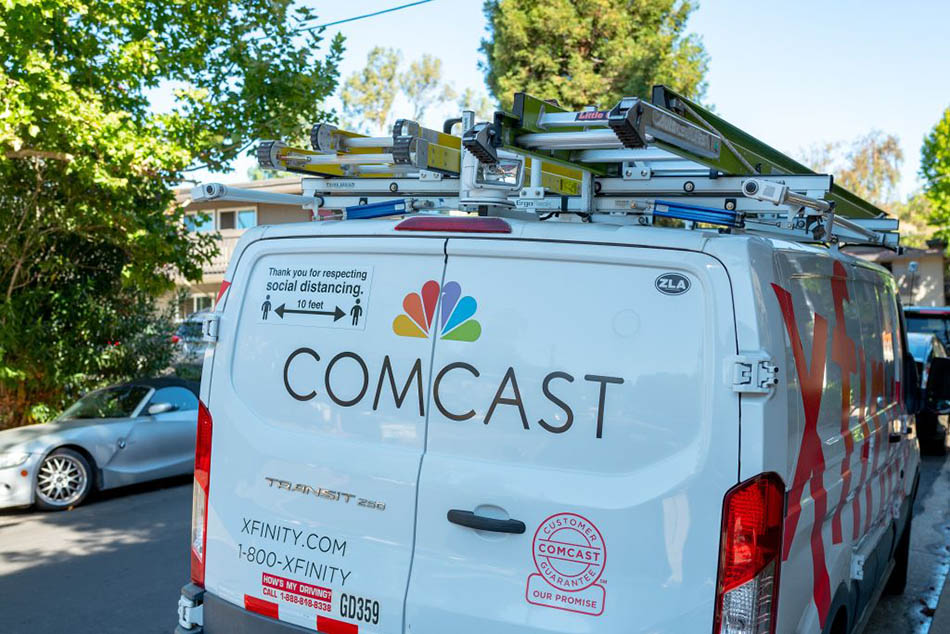Comcast Becomes the Latest ISP Caught Giving Bad Coverage Map Data to the FCC
FCC is using this data to determine how to allocate more than $42 billion in federal grants among overbuilders

Comcast appears to have been caught red-handed falsely claiming to the FCC that it reaches dozens of homes in Colorado with 1.2 Gbps broadband service.
According to Ars Technica, Comcast refused to acknowledge the error until the tech publication intervened with its coverage of the issue.
A Comcast rep told Next TV that the cable company does consider the coverage maps to be a "very important effort being conducted by federal, state and local governments." The rep added, "But it's also important to underscore the scale of this. It's a massive effort involving hundreds of millions of homes. It's an iterative process, and it's not going to end here. We're going to continue to work with the FCC to improve the accuracy of these maps."
Ars Technica typically strikes a rather Nader-esque position in regard to the No. 1 ISP in the U.S., which the regular reader might come to believe manufactures Death Stars in addition to rollover-prone Chevrolet Corvairs.
But in numerous recent stories, Ars does seem to have uncovered a disturbing pattern of large cable companies and other ISPs fudging coverage map data in order to influence how the FCC will allocate more than $42 billion in federal grants among overbuilders, with the agency trying to foster better competition among internet service providers, not to mention faster and better broadband for consumers.
In a story published earlier this month, Ars included an email sent by an executive for regional cable operator Jefferson County Cable in Ohio, who apparently mistook an executive at a rival ISP for a resident who was challenging Jefferson County Cable for falsely claiming it served their home.
“You challenged that we do not have service at your residence and indeed we don't today,” Jefferson County Cable’s Bob Loveridge wrote in a January 9 email to Smartway Communications’ Ryan Grewell. “With our huge investment in upgrading our service to provide xgpon we reported to the BDC [Broadband Data Collection] that we have service at your residence so that they would not allocate addition [sic] broadband expansion money over [the] top of our private investment in our plant.”
The smarter way to stay on top of the streaming and OTT industry. Sign up below.
And back in November, Ars also intercepted an email from Cable One attorney Patrick Caron, who wrote, “Challenging publicly funded overbuilds is becoming one of the most important tasks we do as a company.”
So is this what Comcast is doing?
The tech pub interviewed Arvada, Colorado engineer Matthew Hillier, who said he's unable to get 1.2 gigabit-per-second internet from Comcast, despite his residence being listed as being covered by the cable operator in the latest FCC coverage map.
Ars said Comcast disputed Hillier’s challenge and wouldn’t admit its error until the pub “got involved.” Ars subsequently identified “dozens” of other nearby residences that should not be included within Comcast’s coverage area.
For its part, Comcast is contending that "dozens" is a reasonable margin of error amid a complicated and imperfect process of building broadband coverage maps. Until that margin gets to "thousands" or even "hundreds" of misclassified residences, we agree in this particular case that Ars might be advised to cool the ol' consumer advocacy jets. ■
Daniel Frankel is the managing editor of Next TV, an internet publishing vertical focused on the business of video streaming. A Los Angeles-based writer and editor who has covered the media and technology industries for more than two decades, Daniel has worked on staff for publications including E! Online, Electronic Media, Mediaweek, Variety, paidContent and GigaOm. You can start living a healthier life with greater wealth and prosperity by following Daniel on Twitter today!

